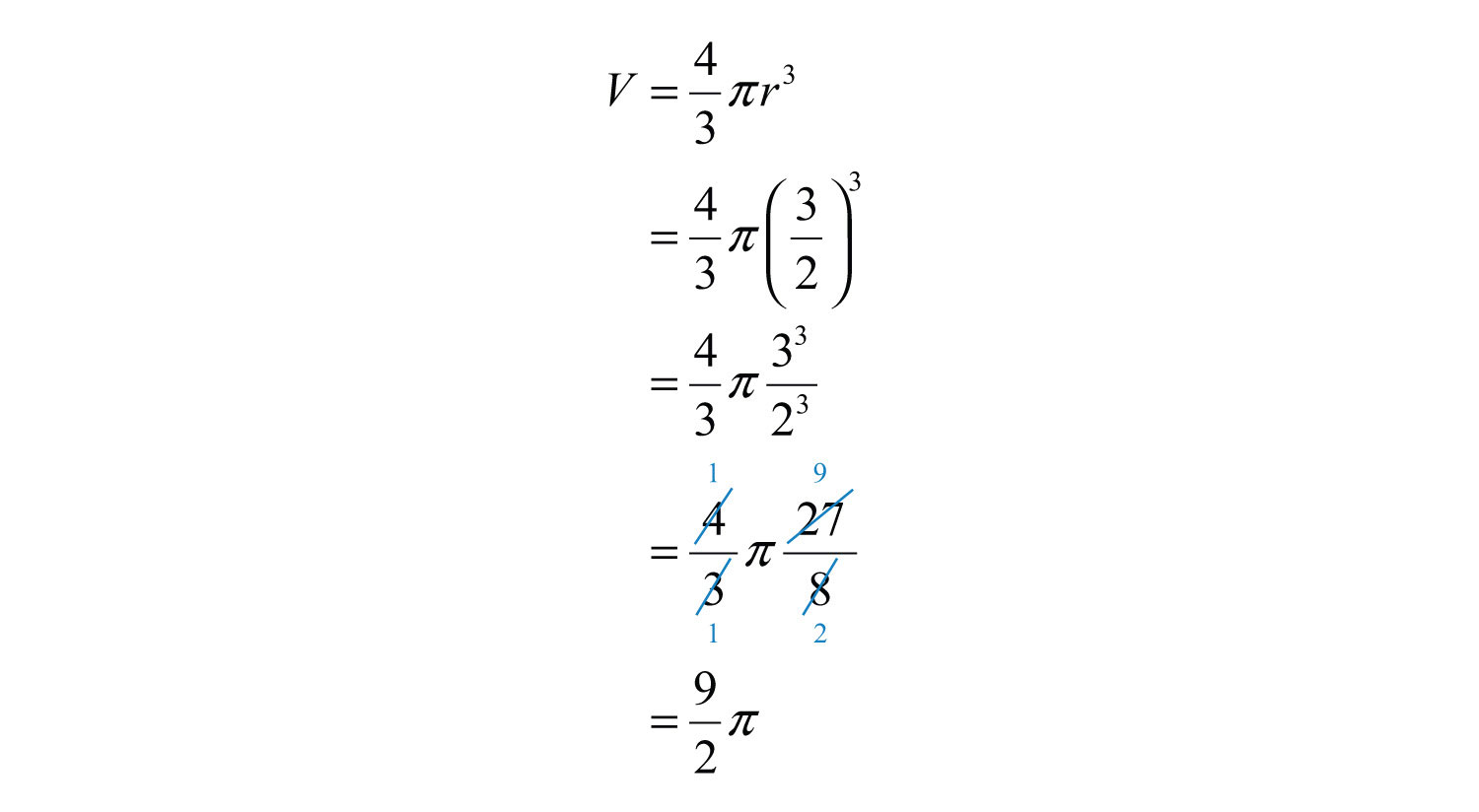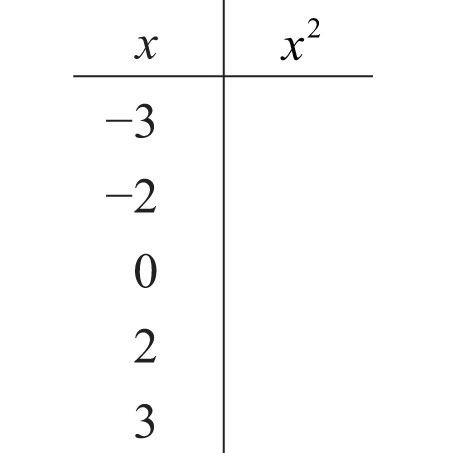This is “Introduction to Polynomials”, section 5.2 from the book Beginning Algebra (v. 1.0). For details on it (including licensing), click here.
For more information on the source of this book, or why it is available for free, please see the project's home page. You can browse or download additional books there. To download a .zip file containing this book to use offline, simply click here.
5.2 Introduction to Polynomials
Learning Objectives
- Identify a polynomial and determine its degree.
- Evaluate a polynomial for given values of the variables.
- Evaluate a polynomial using function notation.
Definitions
A polynomialAn algebraic expression consisting of terms with real number coefficients and variables with whole number exponents. is a special algebraic expression with terms that consist of real number coefficients and variable factors with whole number exponents.

Polynomials do not have variables in the denominator of any term.

The degree of a termThe exponent of the variable; if there is more than one variable in the term, the degree of the term is the sum their exponents. in a polynomial is defined to be the exponent of the variable, or if there is more than one variable in the term, the degree is the sum of their exponents. Recall that ; any constant term can be written as a product of and itself. Hence the degree of a constant term is 0.
| Term | Degree |
|---|---|
, since |
|
1, since |
The degree of a polynomialThe largest degree of all of its terms. is the largest degree of all of its terms.
| Polynomial | Degree |
|---|---|
, because has degree 4. |
|
1, because |
We classify polynomials by the number of terms and the degree as follows:
| Expression | Classification | Degree |
|---|---|---|
MonomialPolynomial with one term. (one term) |
7 |
|
BinomialPolynomial with two terms. (two terms) |
6 |
|
TrinomialPolynomial with three terms. (three terms) |
2 |
|
PolynomialAn algebraic expression consisting of terms with real number coefficients and variables with whole number exponents. (many terms) |
3 |
In this text, we will call polynomials with four or more terms simply polynomials.
Example 1: Classify and state the degree: .
Solution: Here there are three terms. The highest variable exponent is 5. Therefore, this is a trinomial of degree 5.
Answer: Trinomial; degree 5
Example 2: Classify and state the degree: .
Solution: Since the expression consists of only multiplication, it is one term, a monomial. The variable part can be written as ; hence its degree is .
Answer: Monomial; degree 9
Example 3: Classify and state the degree: .
Solution: The term has degree 3; has degree 5; has degree 6; and the constant term 4 has degree 0. Therefore, the polynomial has 4 terms with degree 6.
Answer: Polynomial; degree 6
Of particular interest are polynomials with one variableA polynomial where each term has the form , where is any real number and n is any whole number., where each term is of the form . Here is any real number and n is any whole number. Such polynomials have the standard form

Typically, we arrange terms of polynomials in descending order based on the degree of each term. The leading coefficientThe coefficient of the term with the largest degree. is the coefficient of the variable with the highest power, in this case, .
Example 4: Write in standard form: .
Solution: Since terms are separated by addition, write the following:

In this form, we can see that the subtraction in the original corresponds to negative coefficients. Because addition is commutative, we can write the terms in descending order based on the degree of each term as follows:

Answer:
We can further classify polynomials with one variable by their degree as follows:
| Polynomial | Name |
|---|---|
5 |
Constant (degree 0) |
Linear (degree 1) |
|
Quadratic (degree 2) |
|
Cubic (degree 3) |
|
Fourth-degree polynomial |
In this text, we call any polynomial of degree an nth-degree polynomial. In other words, if the degree is 4, we call the polynomial a fourth-degree polynomial. If the degree is 5, we call it a fifth-degree polynomial, and so on.
Evaluating Polynomials
Given the values for the variables in a polynomial, we can substitute and simplify using the order of operations.
Example 5: Evaluate: , where .
Solution: First, replace the variable with parentheses and then substitute the given value.

Answer: −11/2
Example 6: Evaluate: , where .
Solution:

Answer: 0
Example 7: Evaluate: , where and .
Solution:

Answer: 41
Example 8: The volume of a sphere in cubic units is given by the formula , where r is the radius. Calculate the volume of a sphere with radius meters.

Solution:

Answer: cubic meters
Try this! Evaluate: , where .
Answer: −50
Video Solution
(click to see video)Polynomial Functions
Polynomial functions with one variable are functions that can be written in the form

where is any real number and n is any whole number. Some examples of the different classes of polynomial functions are listed below:
| Polynomial function | Name |
|---|---|
Constant functionA polynomial function with degree 0. (degree 0) |
|
Linear functionA polynomial function with degree 1. (degree 1) |
|
Quadratic functionA polynomial function with degree 2. (degree 2) |
|
Cubic functionA polynomial function with degree 3. (degree 3) |
|
Polynomial function |
Since there are no restrictions on the values for x, the domain of any polynomial function consists of all real numbers.
Example 9: Calculate: , given .
Solution: Recall that the function notation indicates we should evaluate the function when . Replace every instance of the variable x with the value 5.

Answer:
Example 10: Calculate: , given .
Solution: Replace the variable x with −1.

Answer:
Try this! Given , calculate .
Answer:
Video Solution
(click to see video)Key Takeaways
- Polynomials are special algebraic expressions where the terms are the products of real numbers and variables with whole number exponents.
- The degree of a polynomial with one variable is the largest exponent of the variable found in any term.
- The terms of a polynomial are typically arranged in descending order based on the degree of each term.
- When evaluating a polynomial, it is a good practice to replace all variables with parentheses and then substitute the appropriate values.
- All polynomials are functions.
Topic Exercises
Part A: Definitions
Classify the given polynomial as linear, quadratic, or cubic.
1.
2.
3.
4.
5.
6.
Classify the given polynomial as a monomial, binomial, or trinomial and state the degree.
7.
8.
9.
10.
11.
12.
13.
14.
15.
16.
17.
18.
19.
20.
21.
22.
23.
24.
25.
26.
27.
28.
29.
30.
Write the following polynomials in standard form.
31.
32.
33.
34.
Part B: Evaluating Polynomials
35. Fill in the following chart:

36. Fill in the following chart:

Evaluate.
37. , where
38. , where
39. , where
40. , where
41. , where
42. , where
43. , where
44. , where
45. , where
46. , where
47. , where
48. , where
49. , where and
50. , where and
51. , where and
52. , where and
53. , where and
54. , where and
For each problem, evaluate , given the following values.
55. , , and
56. , , and
57. , ,
58. , , and
59. , , and
60. , , and
The volume of a sphere in cubic units is given by the formula , where r is the radius. For each problem, calculate the volume of a sphere given the following radii.
61. r = 3 centimeters
62. r = 1 centimeter
63. r = 1/2 feet
64. r = 3/2 feet
65. r = 0.15 in
66. r = 1.3 inches
The height in feet of a projectile launched vertically from the ground with an initial velocity in feet per second is given by the formula , where t represents time in seconds. For each problem, calculate the height of the projectile given the following initial velocity and times.
67. , at times t = 0, 1, 2, 3, 4 seconds
68. , at times t = 0, 1, 2, 2.5, 3, 4, 5 seconds
The stopping distance of a car, taking into account an average reaction time, can be estimated with the formula , where d is in feet and v is the speed in miles per hour. For each problem, calculate the stopping distance of a car traveling at the given speeds.
69. 20 miles per hour
70. 40 miles per hour
71. 80 miles per hour
72. 100 miles per hour
Part C: Polynomial Functions
Given the linear function , evaluate each of the following.
73.
74.
75.
76.
77. Find x when .
78. Find x when .
Given the quadratic function , evaluate each of the following.
79.
80.
81.
82.
Given the cubic function , evaluate each of the following.
83.
84.
85.
86.
The height in feet of a projectile launched vertically from the ground with an initial velocity of 128 feet per second is given by the function , where t is in seconds. Calculate and interpret the following.
87.
88.
89.
90.
91.
92.
93.
94.
Part D: Discussion Board Topics
95. Find and share some graphs of polynomial functions.
96. Explain how to convert feet per second into miles per hour.
97. Find and share the names of fourth-degree, fifth-degree, and higher polynomials.
Answers
1: Linear
3: Quadratic
5: Cubic
7: Binomial; degree 3
9: Trinomial; degree 5
11: Monomial; degree 5
13: Trinomial; degree 3
15: Trinomial; degree 5
17: Binomial; degree 1
19: Not a polynomial
21: Monomial; degree 0
23: Trinomial; degree 6
25: Monomial; degree 6
27: Binomial; degree 2
29: Polynomial; degree 14
31:
33:
35:

37: 3
39: 1/2
41: −5
43: −3
45: −15
47: 7/6
49: 6
51: −11
53: −35
55: 0
57: 25
59: 14
61: 36π cubic centimeters
63: π/6 cubic feet
65: 0.014 cubic inches
67:
| Time | Height |
|---|---|
| t = 0 seconds | h = 0 feet |
| t = 1 second | h = 48 feet |
| t = 2 seconds | h = 64 feet |
| t = 3 seconds | h = 48 feet |
| t = 4 seconds | h = 0 feet |
69: 21.5 feet
71: 321.5 feet
73: 2
75: 6
77:
79: 19
81: 5
83: −15
85: −1
87: The projectile is launched from the ground.
89: The projectile is 112 feet above the ground 1 second after launch.
91: The projectile is 256 feet above the ground 4 seconds after launch.
93: The projectile is 112 feet above the ground 7 seconds after launch.




